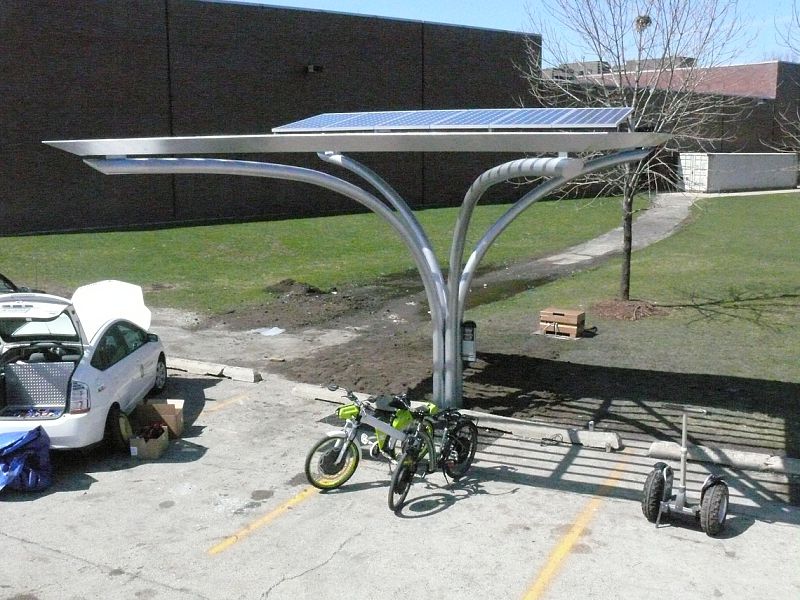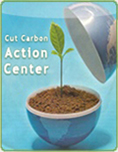
Buildings account for one-sixth of the world’s fresh water withdrawals, one-quarter of its wood harvest, and two-fifths of its material and energy flows (Roodman and Lenssen, 1995).
Building “green” is an opportunity to use our resources efficiently while creating healthier buildings that improve human health, build a better environment, and provide cost savings
A green building, also known as a sustainable building, is a structure that is designed, built, renovated, operated, or reused in an ecological and resource-efficient manner. Green buildings are designed to meet certain objectives such as protecting occupant health; improving employee productivity; using energy, water, and other resources more efficiently; and reducing the overall impact to the environment.
What Are the Economics of Green Buildings?
A green building may cost more up front, but saves through lower operating costs over the life of the building. The green building approach applies a project life cycle cost analysis for determining the appropriate up-front expenditure. This analytical method calculates costs over the useful life of the asset.
These and other cost savings can only be fully realized when they are incorporated at the project’s conceptual design phase with the assistance of an integrated team of professionals. The integrated systems approach ensures that the building is designed as one system rather than a collection of stand-alone systems.
Some benefits, such as improving occupant health, comfort, productivity, reducing pollution and landfill waste are not easily quantified. Consequently, they are not adequately considered in cost analysis. For this reason, consider setting aside a small portion of the building budget to cover differential costs associated with less tangible green building benefits or to cover the cost of researching and analyzing green building options.
Even with a tight budget, many green building measures can be incorporated with minimal or zero increased up-front costs and they can yield enormous savings(Environmental Building News, 1999).
What Are the Best Elements of Green Buildings?
Below is a sampling of green building practices.
Preparing the site
-
Start by selecting a site well suited to take advantage of mass transit.
-
Protect and retain existing landscaping and natural features. Select plants that have low water and pesticide needs, and generate minimum plant trimmings. Use compost and mulches. This will save water and time.
-
Recycled content paving materials, furnishings, and mulches help close the recycling loop.
Energy Efficiency
Most buildings can reach energy efficiency levels far beyond California Title 24 standards, yet most only strive to meet the standard. It is reasonable to strive for 40 percent less energy than Title 24 standards. The following strategies contribute to this goal.
-
Passive design strategies can dramatically affect building energy performance. These measures include building shape and orientation, passive solar design, and the use of natural lighting.
-
Develop strategies to provide natural lighting. Studies have shown that it has a positive impact on productivity and well being.
-
Install high-efficiency lighting systems with advanced lighting controls. Include motion sensors tied to dimmable lighting controls. Task lighting reduces general overhead light levels.
-
Use a properly sized and energy-efficient heat/cooling system in conjunction with a thermally efficient building shell. Maximize light colors for roofing and wall finish materials; install high R-value wall and ceiling insulation; and use minimal glass on east and west exposures.
-
Minimize the electric loads from lighting, equipment, and appliances.
-
Consider alternative energy sources such as photovoltaics and fuel cells that are now available in new products and applications. Renewable energy sources provide a great symbol of emerging technologies for the future.
-
Computer modeling is an extremely useful tool in optimizing design of electrical and mechanical systems and the building shell.
Materials Efficiency
-
Select sustainable construction materials and products by evaluating several characteristics such as reused and recycled content, zero or low off gassing of harmful air emissions, zero or low toxicity, sustainably harvested materials, high recyclability, durability, longevity, and local production. Such products promote resource conservation and efficiency. Using recycled-content products also helps develop markets for recycled materials that are being diverted from California’s landfills, as mandated by the Integrated Waste Management Act.
-
Use dimensional planning and other material efficiency strategies. These strategies reduce the amount of building materials needed and cut construction costs. For example, design rooms on 4-foot multiples to conform to standard-sized wallboard and plywood sheets.
-
Reuse and recycle construction and demolition materials. For example, using inert demolition materials as a base course for a parking lot keeps materials out of landfills and costs less.
-
Require plans for managing materials through deconstruction, demolition, and construction.
-
Design with adequate space to facilitate recycling collection and to incorporate a solid waste management program that prevents waste generation.
Water Efficiency
-
Design for dual plumbing to use recycled water for toilet flushing or a gray water system that recovers rainwater or other nonpotable water for site irrigation.
-
Minimize wastewater by using ultra low-flush toilets, low-flow shower heads, and other water conserving fixtures.
-
Use recirculating systems for centralized hot water distribution.
-
Install point-of-use hot water heating systems for more distant locations.
-
Use a water budget approach that schedules irrigation using the California Irrigation Management Information System data for landscaping.
-
Meter the landscape separately from buildings. Use micro-irrigation (which excludes sprinklers and high-pressure sprayers) to supply water in nonturf areas.
-
Use state-of-the-art irrigation controllers and self-closing nozzles on hoses.
Occupant Health and Safety
Recent studies reveal that buildings with good overall environmental quality can reduce the rate of respiratory disease, allergy, asthma, sick building symptoms, and enhance worker performance. The potential financial benefits of improving indoor environments exceed costs by a factor of 8 and 14 (Fisk and Rosenfeld, 1998).
Choose construction materials and interior finish products with zero or low emissions to improve indoor air quality. Many building materials and cleaning/maintenance products emit toxic gases, such as volatile organic compounds (VOC) and formaldehyde. These gases can have a detrimental impact on occupants’ health and productivity.
Provide adequate ventilation and a high-efficiency, in-duct filtration system. Heating and cooling systems that ensure adequate ventilation and proper filtration can have a dramatic and positive impact on indoor air quality.
Prevent indoor microbial contamination through selection of materials resistant to microbial growth, provide effective drainage from the roof and surrounding landscape, install adequate ventilation in bathrooms, allow proper drainage of air-conditioning coils, and design other building systems to control humidity.
Building Operation and Maintenance
Green building measures cannot achieve their goals unless they work as intended. Building commissioning includes testing and adjusting the mechanical, electrical, and plumbing systems to ensure that all equipment meets design criteria. It also includes instructing the staff on the operation and maintenance of equipment.
Over time, building performance can be assured through measurement, adjustment, and upgrading. Proper maintenance ensures that a building continues to perform as designed and commissioned.
Steps to Ensure Success
-
Establish a vision that embraces sustainable principles and an integrated design approach.
-
Develop a clear statement of the project’s vision, goals, design criteria, and priorities.
-
Develop a project budget that covers green building measures. Allocate contingencies for additional research and analysis of specific options. Seek sponsorship or grant opportunities.
-
Seek advice of a design professional with green building experience.
-
Select a design and construction team that is committed to the project vision. Modify the RFQ/RFP selection process to ensure the contractors have appropriate qualifications to identify, select, and implement an integrated system of green building measures.
-
Develop a project schedule that allows for systems testing and commissioning.
-
Develop contract plans and specifications to ensure that the building design is at a suitable level of building performance.
-
Create effective incentives and oversight.
For More Information
-
California Integrated Waste Management Board Green Building Web site (this site): www.ciwmb.ca.gov/GreenBuilding/. Includes the manual Designing With Vision: A Technical Manual For Material Choices In Sustainable Construction (Pub. #431-99-009). Hard copies are available from the publications clearinghouse at 1-800-CA-WASTE.
-
Sustainable Building Technical Manual, http://www.sustainable.doe.gov/freshstart/articles/ptipub.htm
-
A Guide to Irrigation Water Needs of Landscape Plants in California: www.dpla.water.ca.gov/urban/conservation/landscape/wucols/
-
Department of Health Services, Indoor Air Quality Web site: www.cal-iaq.org
-
U.S. Department of Energy Web site: www.sustainable.doe.gov/buildings/gbintro.shtml
-
Environmental Building News: www.buildinggreen.com/
-
U.S. Green Building Council Web site: www.usgbc.org
You may also order a hard copy of this publication from our catalog.
References
1. D.M Roodman and N. Lenssen, A Building Revolution: How Ecology and Health Concerns are Transforming Construction, Worldwatch Paper 124, Worldwatch Institute, Washington, DC, March 1995, p. 5. (Back)
2. Environmental Building News, Building Green on a Budget, Vol 8, No. 5, May 1999, www.ebuild.com/Archives/Features/ Low_Cost/Low_Cost.html#General (Back)
3. William Fisk and Arthur Rosenfeld, Potential Nationwide Improvements in Productivity and Health From Better Indoor Environments, Lawrence Berkeley National Laboratory, May 1998. (Back)
Retro-Fit with Carbon Day
Carbon Day has partnered with Empact Development which is a full-service construction firm dedicated to the construction of new buildings and retro-fit of existing buildings using environmentally friendly and sustainable materials which will help erase or neutralize any building’s carbon footprint. Our construction and retro-fit program will provide our clients a “Green” approach to operate their assets while benefiting from energy cost savings.
Green Construction has a vast impact on the natural environment, human health, and the economy. By adopting green building strategies, we can maximize both economic and environmental performance. Green construction methods can be integrated into buildings at any stage, from design and construction, to renovation and deconstruction. However, the most significant benefits can be obtained if the design and construction team takes an integrated approach from the earliest stages of a building project.
Green construction is Evidence of a growing trend toward green building design and sustainable living is springing up all over Chicago, we are here to take full advantage of all the opportunities out there. Empact Development has created strategic partnerships with LEED accredited architects, third party authorized certified agents in conjunction with the USGBC, interior designers, landscape architects, manufactures, suppliers, In house project managers, and infinite amount of insured and qualified contractors who only practice Green Construction. We also have a procurement arm for all recyclable and green material/furniture. Empact has hired a grant writing team for our clients to enjoy the tax credits and subsidies on a federal, state, and city level. So not only improve the quality of life for your home and or business, improve your bottom line and enjoy the benefits that are out there for going “GREEN”
Retro-Fit Benefits:
To Owners and Tenants:
- Lower Utility Bills
- Healthier living and work environment
- Reduced Maintenance Cost
- Increase Properties Appreciation
- Increase Resale Value
- Beneficial Mortgage Programs
To Local Municipality:
- Strengthen community programs
- Demonstrate Environmental Leadership
- Preservation of Local Quality of Life
To Builders:
- Lower Waist Removal Cost
- Reduce amount of use of materials
- Increased Marketing potential
To the Environment:
- Greenhouse Gas Reduction
- Improved Water Quality
- Improved Air Quality
- Decreased Carbon Footprint
Steps to Success
- Establish a vision that embraces sustainable principles and an integrated design approach.
- Develop a clear statement of the project’s vision, goals, design criteria, and priorities.
- Develop a project budget that covers green building measures. Allocate contingencies for additional research and analysis of specific options.
- Seek sponsorship or grant opportunities.
- Seek advice of our design professional with green building experience and implement schematic drawings.
- Select a design/build team that is committed to the project vision. Modify the RFQ/RFP selection process to ensure the contractors have appropriate qualifications to identify, select, and implement an integrated system of green building measures.
- Develop a project schedule that allows for systems testing and commissioning.
- Develop contract plans and specifications to ensure that the building design is at a suitable level of building performance.
- Create effective incentives and oversight.
Green building measures cannot achieve their goals unless they work as intended. Building commissioning includes testing and adjusting the mechanical, electrical, and plumbing systems to ensure that all equipment meets design criteria. It also includes instructing the staff on the operation and maintenance of equipment. Over time, building performance can be assured through measurement, adjustment, and upgrading. Proper maintenance ensures that a building continues to perform as designed and commissioned.
- Green Applications
- Solar Applications
- Wind Turbines
- Energy efficient low wattage lighting and lighting design
- Radiant heat
- Tank-less on demand water heaters
- Geo-Thermal Heating
- Green Construction Options
- Recyclable countertops
- Water efficient plumbing fixtures
- High efficiency, Star Rated HVAC systems
- Recyclable insulation
- LOW VOC paint
- Sustainable flooring systems
- Energy Star rated appliances
Please Contact
Elliot Offenbach
800 W Huron Suite 4E
Chicago, IL 60642Direct: 847-977-9929
ElliotO@CarbonDay.com









